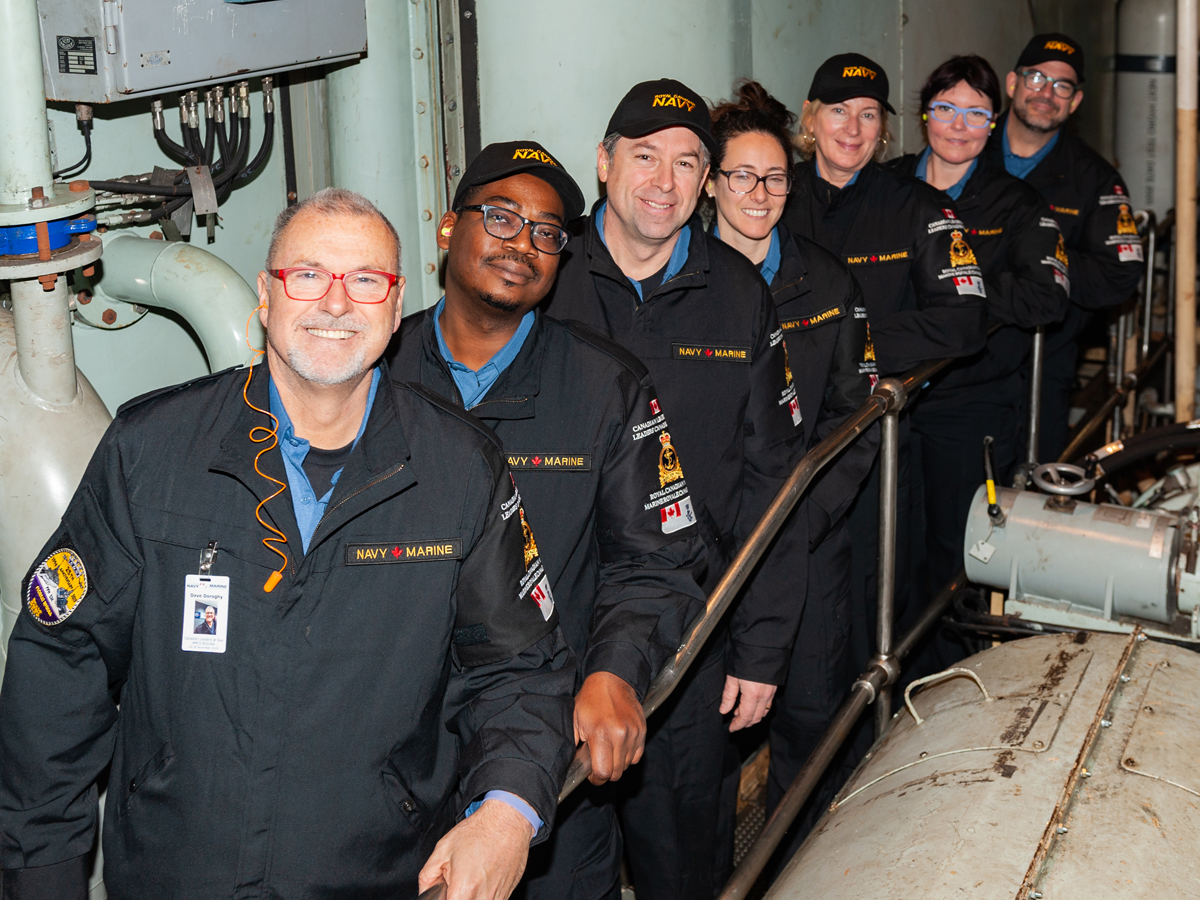Corporate leaders experience navy life in HMCS Regina
By Lookout on Dec 13, 2019 with Comments 0

Leaders at sea – left to right: Dave Doroghy, Chris Scipio, Del Elgersman, Andrée St-Germain, Robin Kerbel, Lucy Sager and Kent Klaufield in the ship’s engine room for a tour.
Janice Lee, MARPAC Public Affairs ~
One by one, seven Canadian community leaders slid out of their “rack” just before the sun crept up over the Pacific Ocean. The civilians were on board HMCS Regina to experience life at sea and earn their sea legs as the warship traversed the waters for three days from Nov. 26 to 28.
A unique Royal Canadian Navy program called Canadian Leaders at Sea brought the upper echelon business leaders on board. As the days at sea progressed, they got an up-close look at a sailor’s experience, which they could bring back and share in their corporate environment.
Their first taste of the salty life happened as the ship headed from the safety of Esquimalt Harbour to the open ocean. As Regina slipped into a high-speed manoeuvre demonstration, the civilian sailors were thrust against the frigate’s walls and railings, trying to find their balance with every steep-angle turn.
When the ship slowed and righted itself, a small speck in the sky grew as a Cyclone helicopter approached from the air, hovering a few yards away to hoist ship divers. The whirl of rotors heightened the already icy gust on to the spectators.
One by one the divers jumped from the Cyclone into the icy water where the ship’s zodiac retrieved them.
Completing the outside demonstrations was a person overboard exercise. “Oscar,” a well-stuffed dummy, was tossed to the sea. Within seconds, a team of sailors rushed to their stations to make the rescue. Moments later Oscar was plucked from the water and brought back on board.
Below deck the civilians had to be mindful of the hatches and avoid clunking head to metal as they wandered the passageways.
To experience the scariest of situations in a ship – a fire, they entered a smoke-filled room, so thick it was impossible to make out the shape of others. To exit the room, they had to find and clamber up the escape hatch.
In the evening, as the sun passed the day to the moon, they ventured to the bridge. Each took a turn at a station, meeting and talking to the sailors at work, and even trying their hand at their jobs, such as driving the ship for a few minutes.
The next day they were shown some of the weapons used by the ship, such as the Bofor 57mm MK III gun on the bow that thundered when fired, with a plume of smoke filling the air. On the deck, after much safety instruction and donning safety gear, they each gripped a .50 calibre machine gun and squeezed the trigger releasing a rush of shots across the ocean surface.
Each hands-on experience, each discussion with a sailor, each day meandering through the passageways all added up to one fact, one the navy wanted them to walk away with – that life in the Royal Canadian Navy is one of constant training to ensure expertise in order to be “ready aye ready” for anything.
Filed Under: Top Stories
About the Author:





